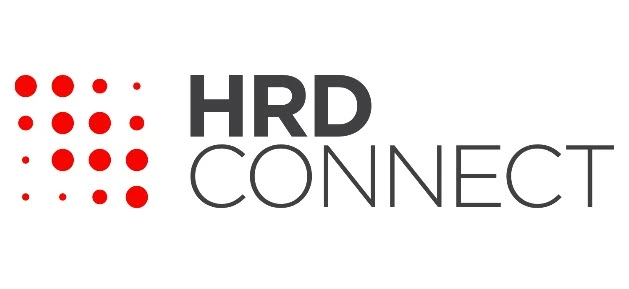People analytics is essential in today's complex business world as it helps organizations make data-driven decisions to maximize the value of the workforce. There are, however, still barriers to adoption, from legal to ethical and from finance to IT.
To ensure that people analytics is more accessible to all audiences, HR leaders need to have a nuanced understanding of the audience they’re speaking with, and the needs and interests of those teams. They also need to know this analytics space inside and out in order to stand their ground on the value that it can provide both employees and companies.
I had the pleasure of speaking with HRD about this topic and more on a recent podcast. We’ve summarized some of those conversations below, but please take a listen too and let me know what you think.
Prefer to Listen to the Conversation?
Q: Why is it important that we reduce the barriers to implementing people analytics systems?
A: It is crucial to reduce barriers to people analytics because, at the end of the day, people analytics is about decision support. Organizations need to make data-driven decisions about their workforce quickly and efficiently in today's complex business world. Workforce costs are most of the costs of doing work in many industries, making it imperative to understand how to maximize the value of the workforce. People analytics provides a way to do that.
Beyond the cost of doing business, the workforce also is made up of people with families, friends, and rich full lives. It's essential to recognize that they are not just resources to be allocated but valuable contributors to the organization. To care for the workforce, we should be using every tool at our disposal to make better decisions related to the workforce. People analytics helps us do that. This is why you need to develop a plan on how to implement HR analytics before the process begins.
Whether it's Workforce Planning (WFP), Diversity, Equity, and Inclusion (DEI), engagement, or breaking down silos, looking at the workforce through the lens of data shines a bright light on the organization. People analytics provides the data and insights to help managers make better decisions, improve employee experiences, and drive business results. Therefore, reducing the barriers to people analytics is critical to unlocking its potential and gaining a competitive edge in today's business world.
Q: Why are HR leaders still afraid of people analytics?
A: For those holdouts, I would first say give people analytics a second look now that the field has matured. I would also add that I recognize that there is a good reason for some HR leaders to be hesitant. HR professionals have seen many fads come and go over the years, such as competency models, 9 boxes, and stack ranking. HR is complex, so it's difficult to determine what new and shiny interest is real and what's fluff, and what will stick around.
Humans might be the most complex thing we manage at work, and for our history at work to date, other humans have been the best way to interpret and manage humans. But this is shifting. Computers are just starting to break through and provide more nuanced and targeted support in that endeavour. People analytics is starting to become expected as a way to augment HR teams' decision-making, and more and more teams are delivering from this function daily.
There is also a framing that I’d push back on that people analytics is the "future of HR,". I know this rubs some HR leaders the wrong way too. I would shift this to say that people analytics is a large part of the future of HR, but that people analytics will become HR or will become an automated tool that we use before it replaces the function. By that, I mean that the best parts of HR, the parts that we are most proud of, are still and will still be those human moments, and we do HR for very human reasons. HR analytics systems when run properly inform us around how to be more human and enable us to spend more time doing those things that are important to us as humanity over time. In the long run, those human things will remain and grow even after we implement people analytics systems.
I don’t believe that HR leaders are necessarily afraid of people analytics. It's more of an adoption curve that all organizations are going through. People analytics is a valuable tool that can help organizations make data-driven decisions and unlock the full potential of their workforce. As the adoption of people analytics continues to increase and as people analytics teams learn how to integrate it into the function, more HR leaders will recognize its benefits and embrace it as a crucial part of their work.
Q: How can we make people analytics more accessible?
A: One way I’ve found is that we can make people analytics more accessible by encouraging HR leaders to think of data insights as another form of employee listening. As HR teams have been cut and their ratios have changed, with sometimes a ratio of 1 to 800, it's challenging to speak regularly with 800 people per year. Listening to the workforce through data allows you to listen at scale.
I say this too because HR professionals are already good at listening, and framing people analytics as listening is a way to tap into something that HR is already good at. Listening through data can provide insights into employee behavior, preferences, and needs, which can inform HR practices and improve employee experiences. I’ll add too that data cannot do it alone. People are still needed to able to interpret and tell the stories behind the data in order to gain insights and make informed decisions.
Therefore, it's essential to provide training and resources to HR leaders to help them understand how to use people analytics effectively. They need to understand how to collect and analyze data, interpret the insights, and use them to inform HR practices. Making people analytics more accessible and encouraging HR leaders to embrace data insights as another form of employee listening can help organizations unlock the full potential of their workforce and improve employee experiences.
Q: Where are areas of concern around privacy and ethics and how can HR leaders reassure their employees?
A: Areas of concern around privacy and ethics can absolutely arise when implementing people analytics. HR leaders must address these concerns well before starting down the path of using data to inform decisions and to reassure their employees that their privacy and ethical standards will be upheld. Privacy considerations should be in place from the beginning of the people analytics process. It should not be an afterthought, but rather a core component of the team's development, tool rollout, and system setup.
Hiring a trained and tenured people analytics leader, someone with experience in the HR subject matter area, or pairing them with someone who has deep HR expertise is an important investment to help an HR team navigate privacy and ethical concerns and to provide guidance to the team. Although IT can be a great partner, they may not have the necessary expertise in privacy and ethical considerations specific to working with workforce data. Knowledgeable folk speaking to the nuance of ethics and privacy around workforce data should lead people analytics, and it's crucial to not have that data cross boundaries. For example, there could be "electric fence" items such as the content of employee emails or sharing DEI data at the row level that would violate privacy, ethical, and legal standards if folk outside of HR had access.
When communicating about people analytics, HR leaders should also focus on sharing the positive impact it can have on employees. By using data to understand employee behavior, preferences, and needs, HR leaders can make informed decisions that improve employee experiences. Reassuring employees that their data is used for good can help them buy into data sharing. HR leaders must help employees feel valued and safe when sharing data.
In summary, HR leaders must be transparent and upfront about privacy and ethical considerations when implementing people analytics. By emphasizing the positive impact of using data for good and ensuring that privacy and ethical standards are upheld, employees can feel more comfortable sharing their data and trust that their employer has their best interests in mind.
Q: How can HR work with finance or IT to help navigate concerns around the cost or need for people analytics?
A: I don't think anything gets done in business today without the buy-in of Finance and IT. We live in a unique economic environment and everything we touch is technology. Anyone that thinks they can go alone without IT or Finance leaders is going to be in for a world of issues.
That said, many times IT or Finance leaders may not know this space or understand the lens of HR. They have their own concerns and lenses that they bring to business, so it is up to us as HR professionals to communicate and share the value of what we do both on our terms and on their terms to ensure that teams are aligned.
It is also important to recognize that Finance and IT leaders are also employees and people leaders who have their own questions and concerns that need to be answered about how workforce data is used. By selling the overall vision of People Analytics and demonstrating how it affects everyone within the company, including their data, their employees, and their decisions as leaders, HR can gain buy-in and support for the initiative from Finance and IT as leaders as well as functional partners.
Anyone heading down the path of starting a people analytics function requires collaboration and alignment between HR, Finance, and IT (and many other teams!) to ensure that the initiative is strategic and aligned with the overall goals of the company. Ultimately, gaining support for people analytics early from these partners leads to better decision-making and outcomes for the company.
Want to learn more about One Model?
Reach out!


